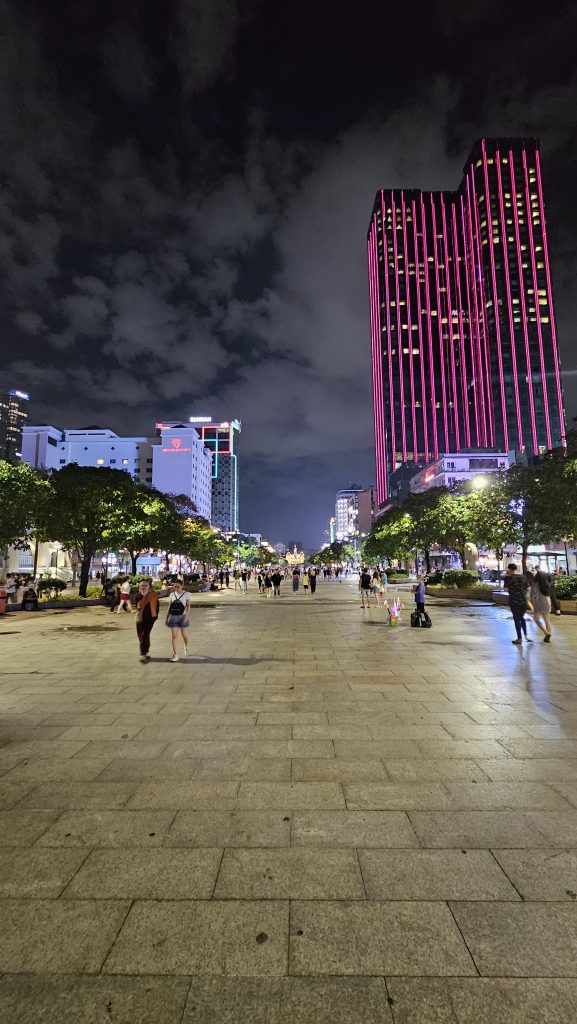
Day 2 (November 5)
Staying up for 31 straight hours, from Seattle to Ho Chi Minh City, seems to have paid off on sleep adjustment. After five hours of uninterrupted sleep I wake refreshed.
Adam and I walk seven miles total in what is obviously a temperate [2] climate. A high of 93 degrees with 99% humidity. Low of 84 degrees at night. Fahrenheit. Like being in a hot rocks sauna at the local YMCA, wearing a sweater. We begin at a famous nearby pedestrian walkway, Nguyen Hue Walking Street, that is empty mid-day.

Ho Chi Minh City (formerly Saigon) has a population of 9.3 million people and 18.6 million scooters (actually pundits estimate two million scooters but that estimate was obviously made by a French colonial who hasn’t been here since 1954.[1]) So where are all the people. We know where the scooters are as they are parked everywhere, outnumber vehicles probably three to one, and require a quick eye and light step to avoid in crosswalks.
At one end of the walkway is a fountain and city hall, in a French colonial building.


We continue our walk to the Cathedral Basilica of our Lady of the Immaculate Concepion, aka Notre-Dame Cathedral Basilica of Saigon, currently under renovation, and imagine how beautiful it must be when not covered by scaffolding and surrounded by construction barriers. They haven’t had a great football team in years. French colonialists [1] built the cathedral between 1863 and 1880. Its two bell towers reach a high of 190 feet.
You, however, do not have to imagine how beautiful it must be as we have this series of tubes, known as the Internet, that stores pictures of the church without all the construction detritus.


Next on the itinerary is the Saigon Central Post office, constructed between 1886 and 1881. We expect this tourist attraction to have a bit of wow factor.

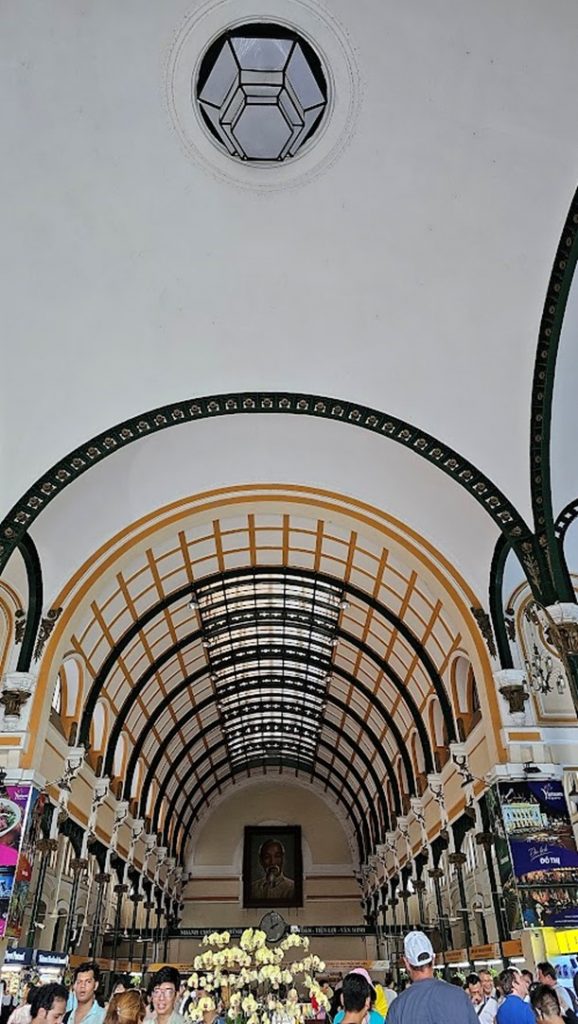
No so much a wow factor for someone who’s been inside St James Cathedral in Seattle. The post office is, however, a refuge for tourists, many of whom are here for touristy things, some here to obtain stamps and send mail.
Vietnam’s reputation for food precedes it. We see many many many eating establishments along our walk, many closed perhaps because it is Sunday. French colonialists [1] were here for many years and traditional Vietnamese fare fused with French fare. Which brings us to the Banh Mi sandwich.
With the many options available to us
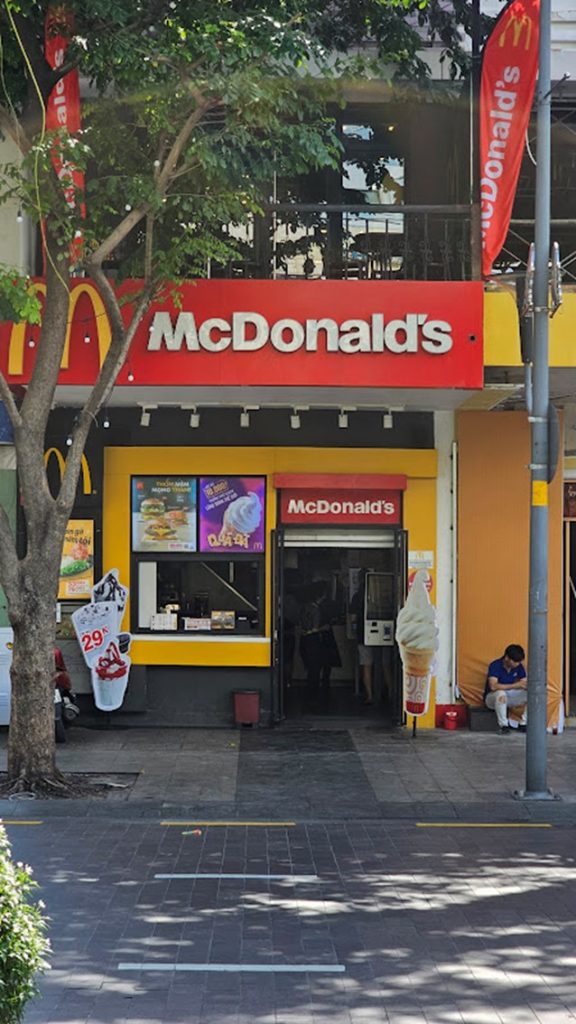
we settle on My Banh Mi (57 Đ. Nguyễn Du, Bến Nghé, Quận 1, Thành phố Hồ Chí Minh 70000, Vietnam).


I am a sucker for Vietnamese Bahn Mi sandwiches and recently introduced the Tacoma variety to Mom, who essentially had the reaction, “where have you been all my life.” The meal costs about $23 US, including four beers (I think Adam drinks three beers but it could just as easily have been two beers each). Yes, I drink Sapporo Premium, a ubiquitous Japanese beer. Adam settles on Tiger Beer, a Singapore lager style beer, “world acclaimed,” established in 1932, if you believe the can.
It’s a good meal, but I’d like to find something more off the beaten path. It’s a risk eating any food here with vegetables (e.g., lettuce) that has been washed with tap water. Tap water in Saigon can contain bacteria or impurities that can make one sick. Some point to the “dangerous levels of heavy metals like lead, iron, arsenic and manganese, in addition to industrial chemicals, pesticides and herbicides [in Ho Chi Minh City’s tap water].” Where Saigon’s Water Comes From and Why It Matters – Saigoneer
I don’t hesitate using the shower in the hotel so, there’s that.
Adam I and stop by a local mini mart and buy 24 bottles of water (an entire case, still in the box) for $6 US.
We continue with the water theme and stop at the Ho Chi Minh City Aquarium.

Adam recommends, on our trip back to the hotel, that we walk through a residential district rather than stick to the main streets. It is a good recommendation. In a labyrinthian street plan straight out of Greek mythology, where we lose our way into dead ends countless times, we end up in Japan Town, a “chic and vibrant neighborhood” that contains the largest Japanese population in Ho Chi Minh City. We emerge from an entrance, finally, after what seems like hours. Well worth the detour.
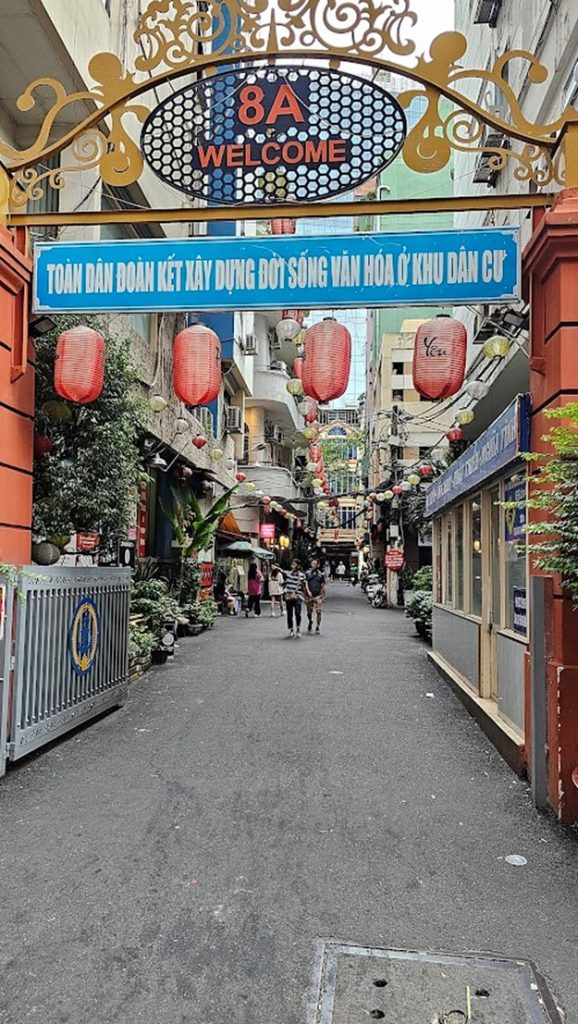
We return to the hotel. I take a nap (as you are probably ready to do now if you are still reading this). We buy tickets to A O Show, held at the Saigon Opera House, a 550-seat venue. The show is almost sold out, so we purchase two tickets on the main floor near the stage, separate from each other by three rows. I find myself in the second row, center, with an unobstructed view. Photographs during the performance are not allowed so you are left with a photograph of the ticket, the opera house, the ceiling, and the stage, five minutes before curtain.
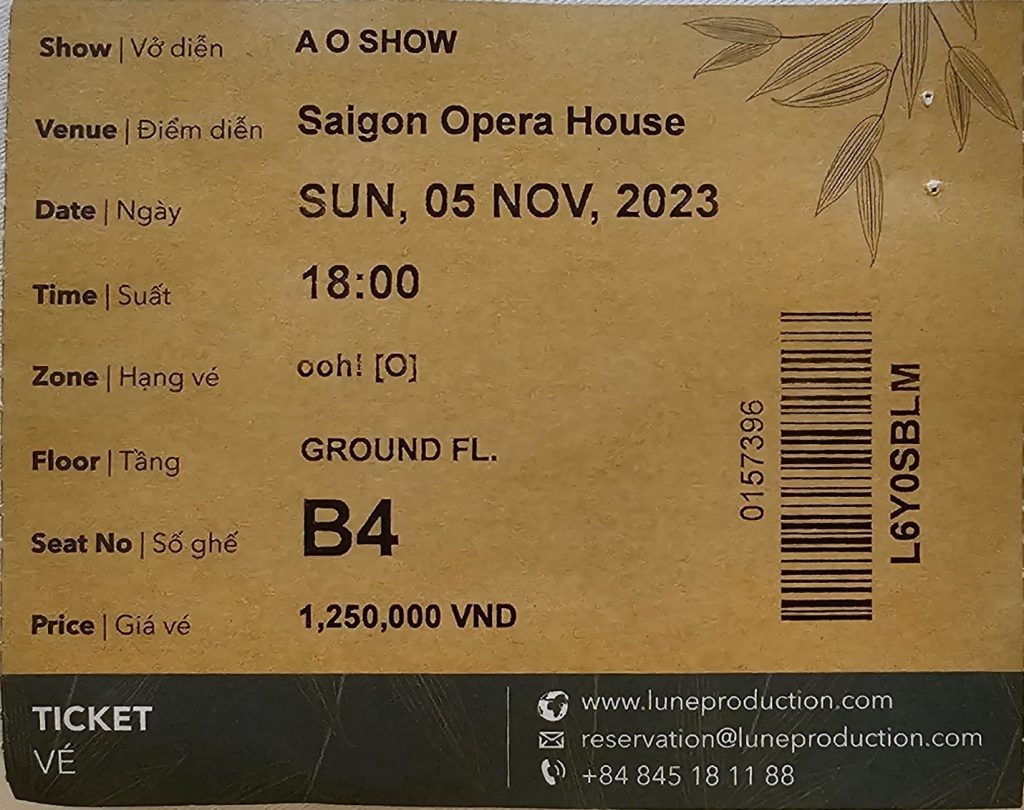



Following the performance we walk back along Nguyen Hue Walking Street. It has transformed. The fountain foredropping city hall is lit up, as are the surrounding buildings.

Compare the empty walking street earlier in the day to now. The photobomb dude in the middle of the below picture exemplifies the mood of most people here. There may be more locals than tourists. The temperature has cooled to a comfortable 84 degrees. There are street musicians, food and trinket hawkers, one security guard who appears napping, a little pan-handling, dancers, and living statutes.

More to tell but we save this for another day.
[1] “On May 7, 1954, the French-held garrison at Dien Bien Phu in Vietnam fell after a four-month siege led by Vietnamese nationalist Ho Chi Minh. After the fall of Dien Bien Phu, the French pulled out of the region.” (Milestones: 1953–1960 – Office of the Historian (state.gov))
[2] Yes, I know what temperate means and this climate is not temperate.

